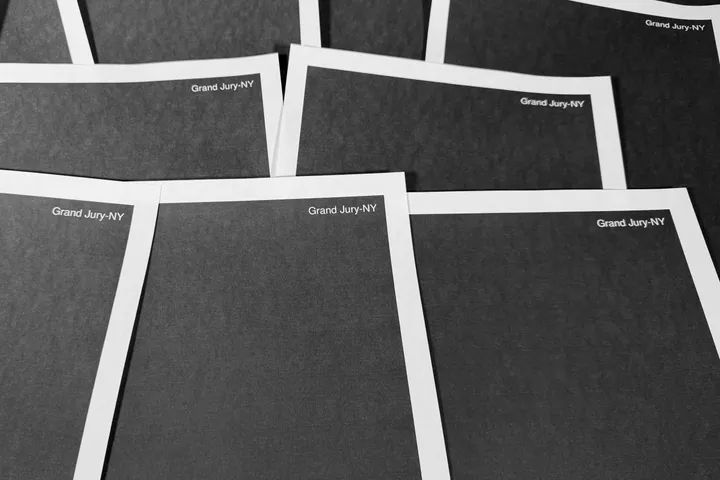Since the second half of the 20th century, there have been countless wars, some of them still ongoing, all under the watch of the United Nations.
The United Nations (UN) was set up in 1945 as an international umbrella organisation with several objectives primarily including the prevention of war and maintaining peace in disputed areas.
However, the UN has failed several times across the world mostly because of the right to veto at the disposal of five countries.
Here are some of the most damning indictments of the UN’s ineffectiveness:
Israeli occupation (1948-Now)
Ever since the creation of the Jewish state in 1948, Palestinians have been fighting against what a UN investigator once described as Israel’s ethnic cleansing.
At least 15,000 Palestinians were killed and some 750,000 out of a total population of 1.9 million were forced to take refuge far from their homelands between 1947 and 1949. More than 7,000 Palestinians and 1,100 Israelis have died in the conflict between 2000 and 2014.
Today Israel controls 85 percent of historic Palestine. It also imposes a crippling blockade on Gaza and continues its construction of illegal settlements on occupied lands in defiance of several UN resolutions calling for an end to those activities.
The United States has also used its veto power several times to counter UN Security Council resolutions that have condemned Israel’s use of force against Palestinian civilians.
Kashmir dispute (1948-Now)
The ongoing confrontation in the disputed Kashmir region has become one of the greatest human rights crises in history, marked by wanton killings, rape, incarceration of leaders and activists, torture and disappearances of Kashmiris, despite several unimplemented UN resolutions over the issue.
The mountainous region is divided between India and Pakistan, who have both claimed it in full since gaining independence from British colonists in 1947.
The rebellion by several Muslims groups in India-administered Kashmir, who seek either a merger with Pakistan or independence, has gained momentum after 1989. At least 68,000 people have been killed by Indian security forces since then.
Cambodia violence (1975-1979)
After the end of the US-Vietnam War and the Cambodian civil war in 1975, the Khmer Rouge regime took control of Cambodia turning it into a socialist country, by using the policy of ultra-Maoism.
The regime carried out genocide between 1975-1979, killing some two million people, nearly 25 percent of the country.
The Vietnamese intervention ended genocide by the Khmer Rouge regime. The United Nations recognised the Khmer Rouge regime, while ignoring concerns of human rights violations.
Somali civil war (1991-Now)
Since the ouster of dictator Mohamed Siad Barre by the Somali Rebellion in 1991, the decades-long civil war has raged between rival clans in the country.
The UN peacekeeping mission, UNOSOM, which was set up in December 1992 to facilitate humanitarian aid to people trapped by civil war and famine, has since failed because of the lack of government to communicate with and repeated attacks against UN officers.
The failure of the UN peacekeeping mission caused about 500,000 civilian deaths in the country.
Rwandan civil war (1994):
One of the worst ethnic genocides since World War II, the civil war between the Rwandan Armed Forces and the rebel Rwandan Patriotic Front (RPF) began in 1990 and lasted until 1994.
In 1994, the then Hutu-dominated regime killed 10 UN peacekeeping officers to prevent international intervention.
In only three months, Hutus brutally murdered about 800,000 Tutsis and raped nearly 250,000 women in Rwanda while UN troops abandoned the victims or just stayed there as spectators while the horrific and brutal violence raged on.
Srebrenica Massacre (1995)
In 1992, Bosnia and Herzegovina declared its independence after a referendum. Following the declaration of independence, Bosnian Serbs mobilised their forces into the country with the help of the Serbian government, which led to the start of the war.
Around 8,000 Muslim men and boys were killed by Bosnian Serb troops under the command of former General Ratko Mladic at Srebrenica in July 1995, the worst mass killing on European soil since World War II.
Many of the Muslim victims had fled to the UN-declared safe zone in Srebrenica only to find the outnumbered and lightly armed Dutch troops there unable to defend them.
Darfur conflict in Sudan (2003-Now)
Rebels in Sudan’s western region of Darfur rose up against the government in February 2003, saying Khartoum discriminated against non-Arab farmers there.
Some 200,000 people have been killed in the conflict since then, while 4.4 million people need aid and over 2.5 million have been displaced.
However, four years later, the UN decided to send 26,000 troops for a resolution in Darfur.
The International Criminal Court issued arrest warrants for Sudanese President Omar Hassan al Bashir in 2009 and 2010 on charges of war crimes and genocide in his drive to crush the Darfur revolt.
Iraq invasion (2003-2011)
More than one million Iraqis have died as a result of the conflict in their country since the US-led invasion in 2003, according to research conducted by one of Britain’s leading polling groups.
The intervention and regime change sought by the US left Iraq with civil and economic instability, and vulnerable to terrorism by Daesh in the coming years.
UN Resolution 1483 attempted to legitimise the invasion that was carried out under the false assertion by the US and the UK that the Saddam regime was in possession of Weapons of Mass Destruction.
Syrian civil war (2011-Now):
The Syrian regime launched a brutal crackdown on peaceful protesters who took to the streets in March 2011, with its leader Bashar al Assad saying he would “relentlessly fight terrorist groups”— referring to the pro-democracy protesters.
The regime released imprisoned Al Qaeda members, right after the protests turned into an uprising, who later formed the backbone of leadership in Daesh, which spread to Syria in 2014 from Iraq.
Several foreign countries are involved in several conflict areas across Syria.
In the year that followed, the UN Security Council tried to pass several resolutions to address the conflict, but Russia utilised its veto power at least a dozen times to protect its ally, Assad.
Syria's conflict alone had, by the end of last year, pushed more than 6.3 million people out of the country, accounting for nearly one-third of the global refugee population. Another 6.2 million Syrians are internally displaced.
South Sudan (2013-Now)
South Sudan became an independent country in July 2011, separating from Sudan.
The country has been experiencing a civil war between President Salva Kiir, from the Dinka ethnic group, and former vice president Riek Machar, frin the Nuer ethnic group.
In the civil war, at least 382,000 people have been killed, according to a State Department-funded study.
More than 14,500 UN peacekeeping officers deployed in the country have failed to prevent the humanitarian crisis in South Sudan. The conflict has forced 2.5 million people to flee the country and left another 1.8 million people displaced within South Sudan. Nearly five million people are also facing severe food insecurity.
Yemen civil war (2014-Now)
The war in Yemen, which began in 2014, between forces loyal to the internationally-accepted government of President Abd Rabbu Mansour Hadi backed by Saudi Arabia and Iranian-backed Houthis has turned more violent after a Saudi-led international coalition started operations against Houthis in March 2015.
The Saudi-led coalition began its intervention in Yemen in 2015, escalating the war, which left the poorest country in the Arab world in a state of disaster.
The UN has failed to send humanitarian aid, food and drugs to civilians amid a blockade imposed on the war-torn country.
Rohingya Crisis, Myanmar (2017-Now)
On August 25, 2017, Myanmar launched a major military crackdown on the Muslim ethnic minority, killing almost 24,000 civilians and forcing 750,000 others, including women and children, to flee to Bangladesh, according to the Ontario International Development Agency (OIDA).
China stood behind Myanmar on the Rohingya crisis by blocking efforts for the Rohingya in the UN Security Council.
The UN documented mass gang rapes, killings — including of infants and young children — brutal beatings and disappearances committed by Myanmar state forces. The UN has described the Rohingya as the “world's most persecuted people.”
























